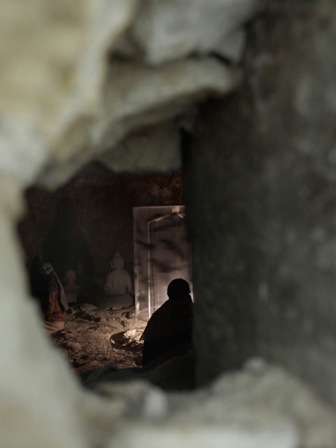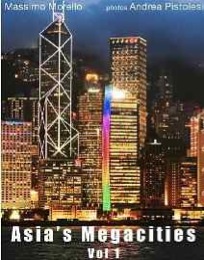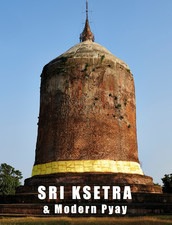Time Being
23/10/13 12:06 Filed in: Stories
The house cat is called Schrödinger. He is the key to everything. In the sense that he can be a being and a non-being at the same time. The cat's name recalls the paradox of physician Erwin Schrödinger, one of those mental quantum mechanics experiments that are as fascinating as they incomprehensible.
Schrödinger is a character in A Tale for the Time Being, the latest novel by Ruth Ozeki.

“A time being is someone who lives in time, and that means you, and me, and every one of us who is, or was, or ever will be,” writes the author and Zen monk in the first few lines. This too can sound like a quantic affirmation: time can be experienced only as a series of interdependent relationships. This thesis was made approximately eight hundred years ago by Dogen Zenji (1200-1253), one of Japan's greatest thinkers and masters of Zen Buddhism, in his essay Time Being. Ozeki is on the record as saying this man was an inspiration for her novel.
From that point of view, the book might look like just another post-new-age story. But in fact - as its appearance on the prestigious Man Booker Prize 2013 shortlist indicates - it is a complex novel, weaving together mystery and meditation, history and record, different space-time levels.
It is brilliant, in my opinion.
But, aside from my opinion, it can be said to be about various subjects. About writing as a “form of prayer”. “You’re not praying to a god, but you’re almost conjuring a reader to arrive,” says Ozeki, comparing writers to people who “hear voices”. “People have always heard voices. Sometimes they’re called shamans, sometimes they’re called mad, and sometimes they’re called fiction writers.”
Schrödinger, the physician and the cat, the monk, the shaman, the writer and all the characters in this novel demonstrate, in turn, how philosophical novels can be written. Which has been and is still called into question by many. According to a very Western, limited vision, they belong to two different worlds, they require different ways of thinking and writing.
A Tale for the Time Being, then, is just another work in the great search for truth, the latest in the eternal struggle between art and philosophy.
The tale, the “récit” on Les Aventures de la vérité, is still on show at the Fondation Maeght in Saint Paul-de Vence, France. Curated by Bernard-Henri Lévy, it attempts to show, as the philosopher-adventurer wrote, “the slightly crazy project of telling and interweaving the history of philosophy and painting”. What he says about painting can also be applied to literature: “I really believe that its first vocation, its primary role, is to think, and to make us think, about the world.”
 “Caverne de Platon”, by Huang Yong Ping, from “Les Aventures de la Vérité”
“Caverne de Platon”, by Huang Yong Ping, from “Les Aventures de la Vérité”
All of this cannot be easy, as the prophets of uncultured thinking would have us believe. Once again the key to everything is Schrödinger's cat. You have to choose whether to live in a box and stay trapped in the paradox for ever, or to open the box. To begin with, we will open the Hello Kitty lunchbox that contains the tale of the time being.
Schrödinger is a character in A Tale for the Time Being, the latest novel by Ruth Ozeki.

“A time being is someone who lives in time, and that means you, and me, and every one of us who is, or was, or ever will be,” writes the author and Zen monk in the first few lines. This too can sound like a quantic affirmation: time can be experienced only as a series of interdependent relationships. This thesis was made approximately eight hundred years ago by Dogen Zenji (1200-1253), one of Japan's greatest thinkers and masters of Zen Buddhism, in his essay Time Being. Ozeki is on the record as saying this man was an inspiration for her novel.
From that point of view, the book might look like just another post-new-age story. But in fact - as its appearance on the prestigious Man Booker Prize 2013 shortlist indicates - it is a complex novel, weaving together mystery and meditation, history and record, different space-time levels.
It is brilliant, in my opinion.
But, aside from my opinion, it can be said to be about various subjects. About writing as a “form of prayer”. “You’re not praying to a god, but you’re almost conjuring a reader to arrive,” says Ozeki, comparing writers to people who “hear voices”. “People have always heard voices. Sometimes they’re called shamans, sometimes they’re called mad, and sometimes they’re called fiction writers.”
Schrödinger, the physician and the cat, the monk, the shaman, the writer and all the characters in this novel demonstrate, in turn, how philosophical novels can be written. Which has been and is still called into question by many. According to a very Western, limited vision, they belong to two different worlds, they require different ways of thinking and writing.
A Tale for the Time Being, then, is just another work in the great search for truth, the latest in the eternal struggle between art and philosophy.
The tale, the “récit” on Les Aventures de la vérité, is still on show at the Fondation Maeght in Saint Paul-de Vence, France. Curated by Bernard-Henri Lévy, it attempts to show, as the philosopher-adventurer wrote, “the slightly crazy project of telling and interweaving the history of philosophy and painting”. What he says about painting can also be applied to literature: “I really believe that its first vocation, its primary role, is to think, and to make us think, about the world.”
 “Caverne de Platon”, by Huang Yong Ping, from “Les Aventures de la Vérité”
“Caverne de Platon”, by Huang Yong Ping, from “Les Aventures de la Vérité”All of this cannot be easy, as the prophets of uncultured thinking would have us believe. Once again the key to everything is Schrödinger's cat. You have to choose whether to live in a box and stay trapped in the paradox for ever, or to open the box. To begin with, we will open the Hello Kitty lunchbox that contains the tale of the time being.
A Tale for the Time Being by Ruth Ozeki -- Official Book Trailer from Viking Books on Vimeo.
0 Comments





